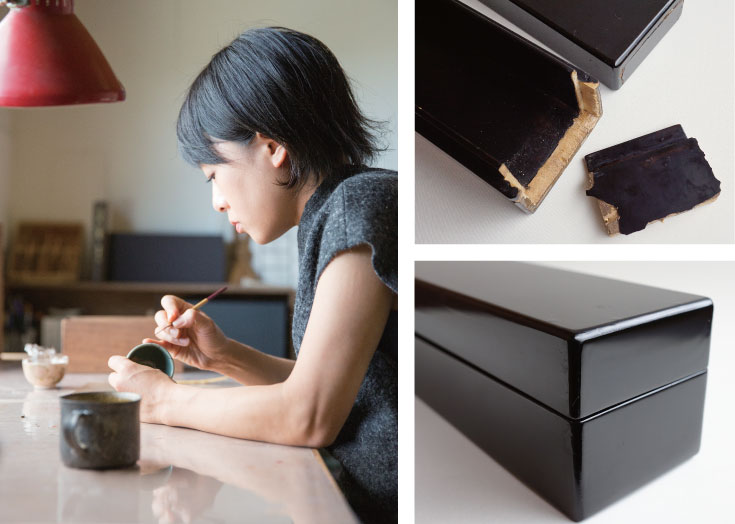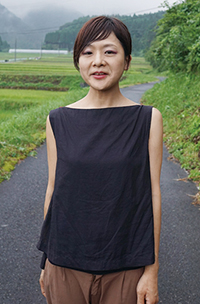niponica is a web magazine that introduces modern Japan to people all over the world.
2019 NO.25
Japan’s Decorative Art of Urushi

The Japanese Spirit Has Been Inherited - Urushi Restorers
Shikki have been used in repaired form since olden times. Here we introduce two specialists in the craft of restoring objects with urushi.
Connections created by urushi as seen in the restoration of everyday items
Kawai Natsumi
Professional restorer/urushi artisan
Kawai works in the three locations of Kyoto, Tokyo and Tottori, as a professional restorer, primarily using urushi and kintsugi (urushi mixed with gold and silver). She has restored more than 800 articles, ranging from everyday items to antiques.
Shikki are protected by a coating of urushi, which allows us to use them over generations by handling them with care and restoring them.
Kawai Natsumi is fascinated by the robust properties of urushi, and works as a professional restorer - mainly on urushi items. Kawai started down this path because she questioned the worth of producing something that generates a lot of waste. She feels that, as opposed to creating shikki, restoring them is worthwhile because it is work aimed at giving the items a new lease on life.
Kawai says: " Shikki are long-cherished objects, so I repair them with a view to their being useful for decades to come." Often, clients who come to her for repair services bring in inherited items that are 30-100, or even more than 150 years old – which means that those clients are personally attached to them. She discusses the repair plan with the clients and sometimes they decide to simply retain the unique texture of the aged object. She restores objects so that clients can keep on using them.
“When you’ve been engaged in restoration over many years, you learn how the ‘laws of damage’ work. I try to get ahead of things and work on spots where damage might be expected to occur.” Conditions vary constantly as both the wood and the urushi breathe, but doing restoration work develops restorers’ observation skills and improves their techniques. Urushi restoration is a series of discoveries, she notes, and it has never been a hardship. While it may be difficult to restore objects made of cheap low-quality materials, Kawai feels a sense of reward upon seeing the client's expression of delight.
“Prolonging your time with something by having it fixed gives you a sense of security and seems to serve as a kind of therapy. I feel that I have acquired a technique of looking at things positively - even breakages.”
Restorations tend to bring about attitudinal changes in both restorers and those who use the restored objects. These changes are also passed to the next generation who will use shikki.

Left: Restoration being carried out using urushi
The most appropriate method of repair is selected depending on the condition of the object.
Right: A hanging scroll box repaired using the ware-naoshi method in which urushi is employed to stick the broken parts back together. Urushi is also used as a finish coating after the parts are adhered.





